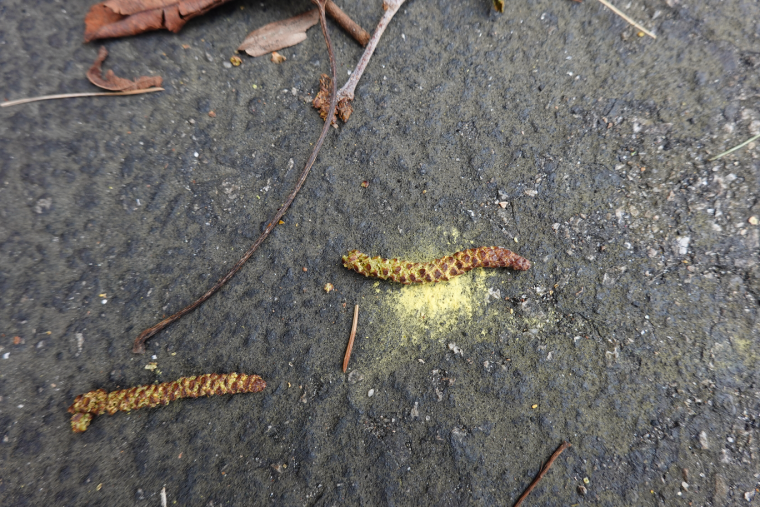
In a nutshell
An estimated 400 million people worldwide suffer from pollen allergies each year. Pollen alerts give allergy sufferers the potential to reduce their exposure and the negative health impacts that result. Pollen stations, which track pollen concentrations in the air, provide reliable measures, though station coverage is limited and data collection frequency is variable. A potential alternative data source for alerts is flowering phenology observations, which can be highly correlated with the presence of airborne pollen. However, few studies have compared flowering and pollen on a large geographic scale in the US.
The authors compared daily pollen measurements collected at 36 National Allergy Bureau stations to flowering and pollen cone observations contributed to Nature’s Notebook within 200km of the station. They found that the strength of the relationship between open flowers and pollen cones and pollen concentration varied by the type of plant. Oaks (Quercus) and walnuts (Juglans) demonstrated the strongest agreement between open flowers timing and daily pollen concentrations.
What is special about this study?
The authors leveraged 12 years of flowering data on 14 genera of wind-pollenated trees collected through the Nature’s Notebook platform. There is great potential to leverage volunteer-collected observations of flowering to make better predictions of pollen. Nature’s Notebook data collection campaigns have led to a great increase in data for select taxa; a campaign focused on allergenic species across the US could provide local, species-specific predictions of pollen timing.
What does this mean for YOU?
Currently, allergy sufferers have limited information about when they will be exposed to airborne pollen in their area. More specific data on the timing of open flowers and pollen release, like those that you collect in Nature’s Notebook, could play a key role in real-time pollen alerts with local specificity.
Citation: Crimmins, T.M., E. Vogt, C.L. Brown, D. Dalan, A. Manangan, G. Robinson, Y. Song, K. Zhu, and D.S.W. Katz. 2023. Volunteer-contributed observations of flowering often correlate with airborne pollen concentrations. International Journal of Biometeorology doi.org/10.1007/s00484-023-02506-3